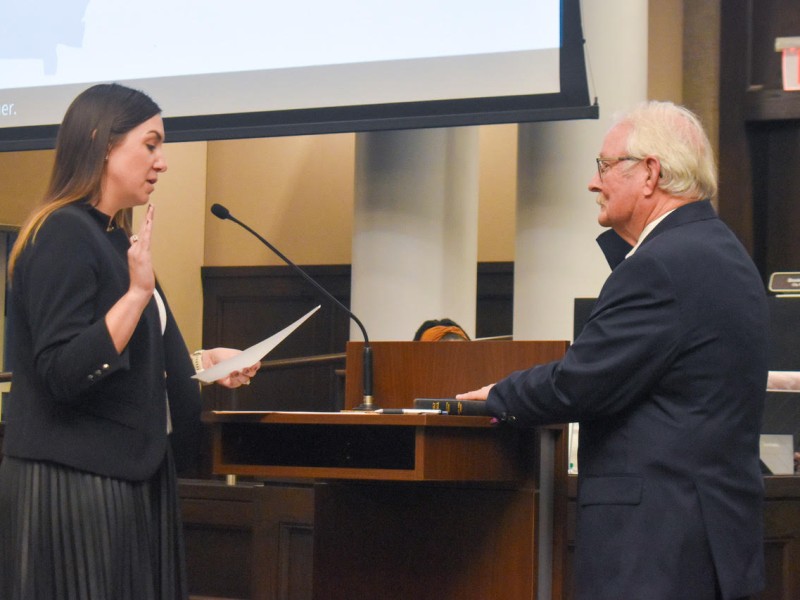Turkey became the Thanksgiving tradition
Most Thanksgiving meals in the United States feature a large roasted turkey as the centerpiece of the meal. Served with various sides, which vary from family to family, it is a feast fit for royalty.
The first Thanksgiving held in 1621 as a feast shared between Pilgrims and Wampanoag Indians at Plymouth Colony, is said to have been of venison, ham, lobster, clams, berries, pumpkin, squash, waterfowl (goose, duck, swan) and a large number of wild turkeys. Except for the seafood, all of those foods have gone on to be a main part of modern Thanksgiving meals.
However, though wild turkeys were part of the first Thanksgiving meal, it remained an uncommon Thanksgiving fare until the 1800s. It was extremely popular with the Founding Fathers, however. Alexander Hamilton said that every United States citizen should eat turkey on Thanksgiving. Benjamin Franklin loved the food so much that he suggested wild turkey as the national bird — at least according to myth. He did bemoan the bald eagle as the choice and said the turkey was a more respectable, and an original North American, bird, but no evidence points to his desire to make it the national symbol.
In 1947, President Harry Truman attempted to promote “Poultryless Thursdays” as part of a rationing campaign. This meant that turkey and egg products were not to be eaten, making turkey and pumpkin pie — two Thanksgiving staples — forbidden.
However, the National Egg Board and National Poultry Board lobbied Truman to stop promoting his plan, and he eventually relented. While forgiving turkey, eggs remained banned on Thursdays for the rest of the year, so there was no pumpkin pie served at the White House that year.
Turkey’s popularity has soared over the years. It is such a popular Thanksgiving food that America spends about $8 billion on the bird every Thanksgiving and Christmas. Turkey growers raise about 270 million turkeys; however, the turkey Americans typically consume — the Broad Breasted White turkey — has to be artificially bred and suffers from severe health problems due to its unnaturally large size.
However, many people feel that turkey is a poor meat in terms of taste or quality. Others are turned off by the artificial nature of the most popular supermarket variety. Many households now serve ham, chicken, goose or duck in lieu of or as an accompaniment to the bird.
The meat often varies by region. For example, quail is native to Texas, so families will sometimes hunt and serve that fowl instead. Other regions, such as the West Coast, serve Dungeness crab; Alaskans will sometimes eat whale meat; Irish immigrants prefer prime rib; and several families in Louisiana and Mississippi will eat wild turkey as well as alligator and even turtle.
While most people can pardon others for not eating turkey on Thanksgiving, two side dishes will forever be at war: The battle of stuffing versus dressing and jellied cranberry sauce versus fresh rages on.
Stuffing is defined by Merriam-Webster as “a seasoned mixture (as bread crumbs, vegetables and butter) that is typically placed inside the cavity of a turkey, pepper, etc., and cooked.” Dressing, however, is defined as “a seasoned mixture usually used as a stuffing (as for poultry).” This leads to confusion between the differences for those who wish to remain neutral in the fight.
It has become the war’s definition to define stuffing as that which is cooked inside a bird while stuffing is cooked in a pan separate and away from the turkey. Recipes for each vary, with herb stuffing and cornbread or oyster dressing as the most popular.
The fight of jellied cranberry sauce versus fresh has many good arguments on both sides, such as jelly stays where one puts it while fresh food is the nature of Thanksgiving. It is rarely served in America without turkey; however, fresh cranberry sauce is an excellent vanilla ice cream topping.
Southerners will often eat baked macaroni and cheese and collard greens as sides, which has become traditional in its own right. Northern counterparts continue with mashed potatoes and gravy and the iconic green bean
casserole.
Dessert is usually pumpkin pie, which is popular among all regions of the United States. Southerners also serve a pecan pie as the nut is in season during the fall, and sweet potato pie is fast becoming a popular Thanksgiving dessert as well. In the Northern section of the country, apple pie is starting to rival pumpkin pie as the official Thanksgiving dessert in many households. However, the most traditional of Thanksgiving desserts is actually not pie at all, but cake.
George Washington, who had tooth problems most of his life and wore dentures, preferred soft foods, so his favorite Thanksgiving dessert, according to legend, was cornmeal cake. The cake can be flavored with any number of items, such as plum, oranges, cherries, blueberries or cranberries. Essentially, however, it remains simply a sweet cornbread with other flavors added.
One thing the great majority people can agree on is that Thanksgiving is a time for food, family and giving thanks for what we have.
HHJ News
Before you go...
Thanks for reading The Houston Home Journal — we hope this article added to your day.
For over 150 years, Houston Home Journal has been the newspaper of record for Perry, Warner Robins and Centerville. We're excited to expand our online news coverage, while maintaining our twice-weekly print newspaper.
If you like what you see, please consider becoming a member of The Houston Home Journal. We're all in this together, working for a better Warner Robins, Perry and Centerville, and we appreciate and need your support.
Please join the readers like you who help make community journalism possible by joining The Houston Home Journal. Thank you.
- Brieanna Smith, Houston Home Journal managing editor



